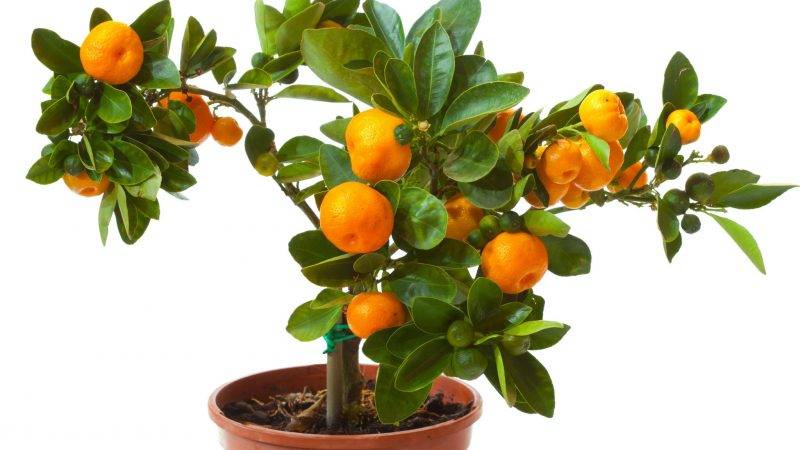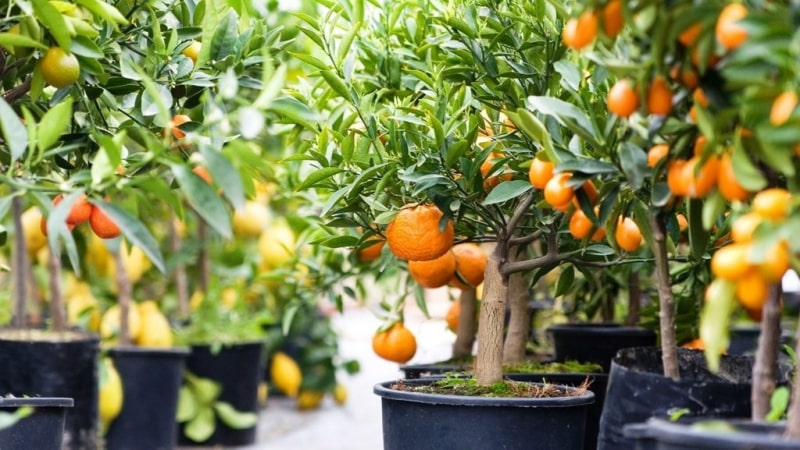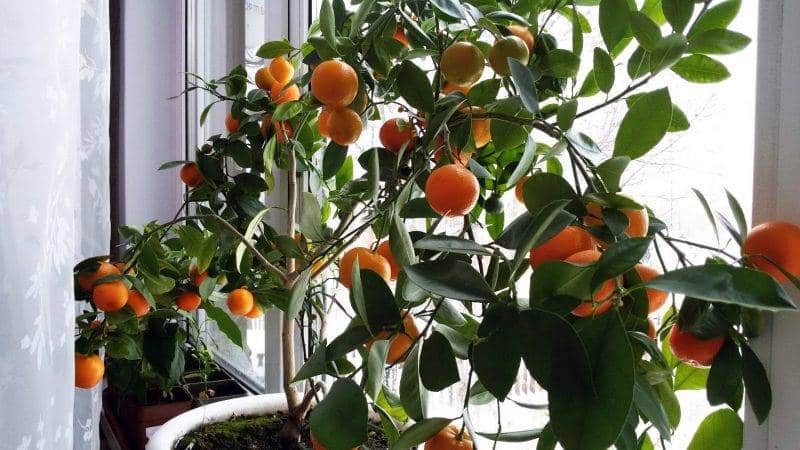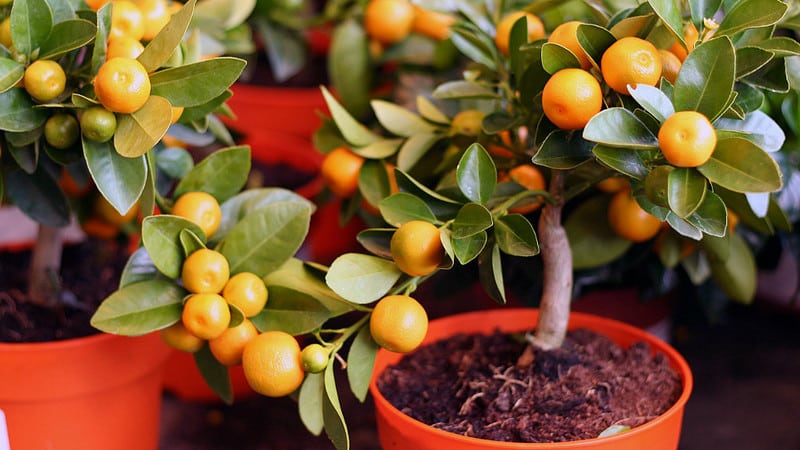What soil is suitable for tangerines at home?
When you see a juicy, aromatic tangerine, an association with the warm southern sun certainly arises in your head. It’s hard to believe, but you can grow a tangerine tree at home on your windowsill. Such a houseplant brings aesthetic pleasure, fills the room with positive energy and even bears fruit. Let's find out what conditions are necessary for it.
Features of growing tangerine at home
If you decide to grow a tangerine tree at home, first decide on the variety. There are specially bred dwarf varieties for growing in pots (Unshiu, Shiva-Mikan, Kovano-Vase, Clementine, etc.). The height of such a tree does not exceed 1 m, the crown is compact and does not require pruning.
There are two ways to grow mandarin Houses. Purchase ready-made seedlings in a specialized store or use seeds from fruits purchased in a regular store or market for this purpose.

Take seeds from ripe fruits without signs of spoilage. Separate them from the pulp and place them in a damp cloth for several days to germinate. As soon as the sprouts appear, place them in the soil.
Caring for an adult tangerine tree includes watering, fertilizing and timely transplanting into a pot of larger diameter. The tangerine tree is very light-loving, so it is better to place it on the south or south-east side, and in winter it needs to be illuminated with special lamps.
Choosing a container for planting

To plant sprouted seeds, use small pots or bowls with a depth of at least 6-7 cm. Even regular disposable plastic cups are suitable. Don't forget about drainage holes, otherwise the plants will die.
When the sprouts take root, become stronger, and have 4 leaves, transplant them into medium-sized pots. For young plants, it is not recommended to use containers with a diameter of more than 15 cm.
The tree is replanted once a year, increasing the diameter of the pot by 1 cm, and fruit-bearing trees - every 2-3 years, increasing the diameter of the pot by 4-6 cm at once. Bulk trees, the replanting of which is difficult, can be left in the old place, carefully replacing the top layer soil to fresh.
Important! It is not recommended to immediately take a container of large diameter. This leads to waterlogging of the soil, damage to the roots and death of the plant.
The material of the container for planting a tangerine tree depends on your taste and the interior of the room. An exotic plant looks most organic in a pot made of natural stone or a wooden tub.
What soil should I prepare for planting tangerines at home?

The soil for tangerine should not contain peat, as it does not like acidic soils.
For seed germination, sawdust serves as an alternative to soil. They are moistened, seeds are placed in them and placed in a warm place, avoiding direct sunlight. As soon as the sprouts hatch, prepare a pot with soil and place them there.
For planting seeds and transplanting young seedlings, the following substrate composition is considered optimal:
- land from under deciduous trees - 1 part;
- turf – 2 parts;
- quartz sand – 1 part;
- humus from cow manure - 1 part.
The use of these components will provide the developing plant with all the necessary microelements and will help it acquire a lush crown and a strong root system. Over time, the plant's needs change. When transplanting an adult tree, it is recommended to slightly change the composition of the substrate. You need to take:
- 1 part of the land from under deciduous plants;
- 3 parts of turf;
- 1 part humus;
- 1 part sand;
- a small amount of high-fat clay.
When harvesting land in a deciduous forest, avoid areas where oak, poplar and chestnut grow. It is better to take soil from the top fertile layer, without going deeper than 10 cm. This composition helps mature trees take root faster and stimulates fruiting.
Features of soil care for mandarin
The tangerine tree feels great in neutral soil. The optimal substrate is with a pH of 6.5-7. Carefully inspect the selected material for the presence of pest larvae. This will prevent damage to the plant. To destroy bacteria in the soil before planting, it is recommended to water it with a light pink solution of potassium permanganate.
Another important requirement for soil for a tangerine tree is the level of humidity. To prevent the soil from becoming waterlogged, it is necessary to have holes and a drainage layer at the bottom of the pot. Depending on the shape and size of the container, make one or more holes in the bottom so that excess water flows freely through them. Use small stones, expanded clay, and charcoal for drainage. The thickness of the drainage layer should not exceed 5 cm.
The tangerine tree needs nutrients obtained from the soil: nitrogen, phosphorus, potassium, calcium, sulfur, phosphorus, iron. Spring is the optimal period for applying fertilizers, because at this time shoot growth is activated and the plant’s needs increase. Complex mineral and organic fertilizers are suitable for feeding the tangerine tree. An important condition for proper fertilizing is preliminary abundant moisture of the soil.

Important! When using store-bought fertilizers, strictly follow the instructions and do not change the recommended proportions when preparing nutrient solutions.
It is important to carefully monitor the soil moisture for the tangerine and not allow the earthen ball to dry out completely. The watering schedule depends on the room temperature, pot size, time of year and other factors.
Determining whether a tree needs watering is easy. Take a pinch of soil from the pot and squeeze it with two fingers. If the soil sticks together, it is too early to water; if it crumbles, it’s time. It is not recommended to use tap water for irrigation. This can cause white spots to form on the leaves.
Watering is best done with cooled boiled water. If you don't have time for this, use hot tap water. It contains fewer impurities that alkalize the soil. In any case, before watering, the water must be kept for a day in a wide container without a lid.
This is interesting:
Health benefits and harms of tangerines, energy value and rules of consumption.
Conclusion
A small seed can turn into a fruit-bearing tree in a few years. Compliance with the described conditions will help you not only enjoy the appearance of the tangerine tree, but also enjoy its juicy fruits.